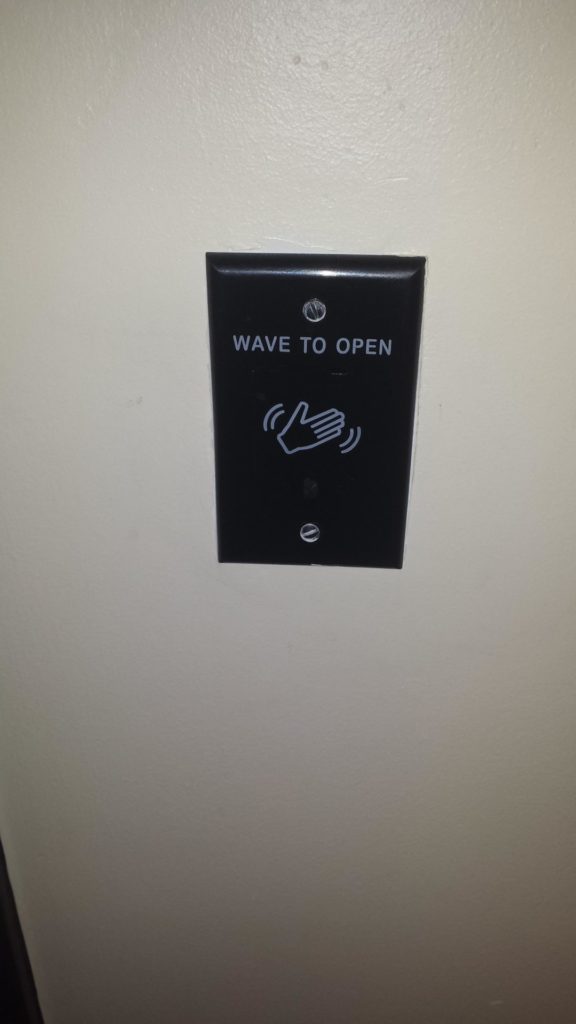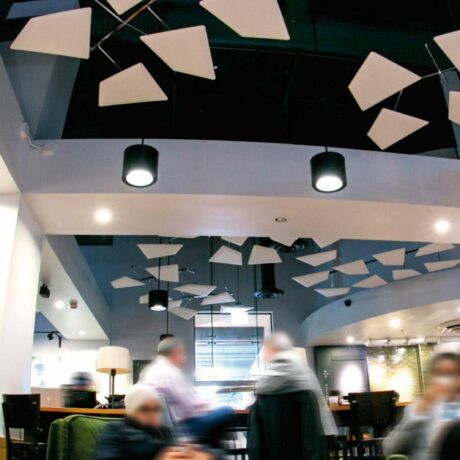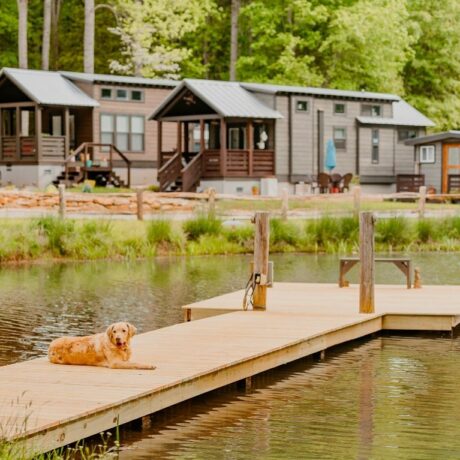
Bio:
Maike Cheng is the founder and president of MC Collaborative Designs with locations in Dallas and Seattle. The firm specializes in holistic design with an emphasis on space planning and functionality. In addition, he is the creator of YouTube series Debriefing Design (debriefingdesign.co), and co-hosts a podcast of the same title (podcast.debriefingdesign.co). He is a NCIDQ-certified Interior Designer and real estate broker in Texas and Washington. He is on the NAF Advisory Board for the North Dallas High School and you can find him regularly volunteering at the Network of Community Ministries food pantry.
Going back to work in an office environment after a worldwide pandemic is not a decision to be made lightly and needs to be assessed holistically in order to determine the best plan of action to accommodate a business and its employees.
Depending on the building type, the simple act of getting to one’s floor may prove to be a bigger obstacle for most employees in an urban environment. With social distancing measures in place, the logistics of transporting personnel via limited numbers of elevators may prevent employees from ever reaching their office. Gone are the days of overcrowding an elevator followed by the unbearable screech of the overload warning alarm.
The Vertical Transportation System


To protect the workforce willing to return to their offices, office design needs to start with vertical transport. A couple of options have been discussed including limiting each elevator ride to 4 individuals, all facing different corners of the elevator cab. There’s also the possibility of installing plexiglass divider ‘booths’ for potentially more bodies to fit in one ride. A more realistic approach that needs to be considered is whether the workday of any high-rise buildings could be extended or staggered into various shifts throughout the 24-hour day in lieu of the 9-5 workday. By staggering work hours or cycling three 8-hour shifts in a day, the demand on a building’s vertical transportation can be better controlled, also allowing regular sanitization intervals throughout the day. For low- and mid-rise buildings, an escalator may be the most pragmatic solution to transfer occupants from floor to floor with the least impact on the workday.

‘Touchless’ Doors
Within the building itself, retrofitting automatic door openers on all public area doors appears to be the logical way of reducing touched surfaces. Should space permit, an automatic revolving door is a great solution for touchless entry into a building or space. Where electricity is limited, a foot-operated door opener is also a viable alternative.
The security desk of a building and also the reception desk of an office needs to serve additional functions as both a temperature check and a sanitization station. Meanwhile, disinfecting and sanitization stations will need to be installed on each floor at main wayfinding and travel thoroughfares.
On the Surface(s)
Surfaces will be an important topic to address as the need for non-porous surfaces will allow the most effective disinfecting and sanitization. This may be a difficult adjustment as the majority of modular office furniture uses fabric panel dividers. In lieu of porous woven fabrics, offices needing sound attenuation may turn towards polyurethane or silicone fabrics that may be wiped down or sprayed with bleach. For spaces that don’t have sound concerns, changing to glass, solid surface, porcelain, or laminate surfaces will allow cleaning crews to do their job thoroughly without worrying about damaging surfaces.
Something that needs to be considered in an organization is the type of disinfecting and sanitization to be utilized as certain types of antimicrobial technologies are prone to lead to the development of superbugs. Making sure everyone is on board with facility maintenance methodology will be critical as we enter the next phase of returning to the office.
Maximize Space Utilization
In terms of the workspace, priority needs to be given to workers who are high risk or have high risk members in their family. Ideally these individuals will be allowed to continue working from home; however, should they need to physically work in the office, it may make sense for these individuals to take over a private office in lieu of an open work area layout. Small conference rooms may also be converted into safe spaces for these individuals with a focus on keeping them and their family healthy.
For large conference rooms, furniture can be adapted to utilize donut-style table layouts instead of a conference table. This will allow social distancing to occur while reducing the number of people that can occupy the room at any given time. If more people need to be in one meeting, perhaps all employees remaining at their own desks and dialing into a virtual meeting is the best solution for the time being.

In open work spaces, vertical dividers need to be added between all users, depending on the type of furniture utilized. Panels should accommodate for users at sitting or standing height and should extend a minimum of 30” over the height of the work surface. Each space should also be equipped with its own personal air filtration device and noise-cancellation machine.
Hexagon shaped layouts may allow the maximum usage of a space while providing social distancing; however, they do take up more space than their 90-degree counterparts. In 90-degree layouts, consider either reducing the number of desks or alternate days for employees working from the office. Another solution may be a 4-day “work from office” work week alternating days between 50% of staff with working one day from home which will allow the entire office to be disinfected and sanitized on a weekly basis.
Where space allows, perhaps a move towards working outdoors may help with distancing employees and improving mental health and productivity. Studies show that exposure to natural daylight enhances one’s mood and outdoor air circulation provides less chances of transmitting or becoming infected with the virus.
As organizations are contemplating the big shift returning to work in the office, there are more logistics to consider than just the office environment itself. Businesses have to make the decision based on the benefits of every employee acknowledging that what works for one group may not necessarily work for another.


The return to the office will require a deep discussion among all levels of an organization: IT, to provide enough bandwidth and security protocol for workers to communicate with their working from home counterparts; facility management, to implement the best types of sanitization without damaging equipment; security, to determine the proper protocol for dealing with someone who fails a temperature check or exhibits signs of sickness; and leadership, to determine who needs to return to the office.
Another decision that needs to be made is whether the need for office real estate is necessary for the operation of the business. Some businesses may decide to terminate their office leases and move towards a co-working space that allows a hybrid work environment for their staff. The next phase of this worldwide pandemic starts by having a conversation with all parties involved.




